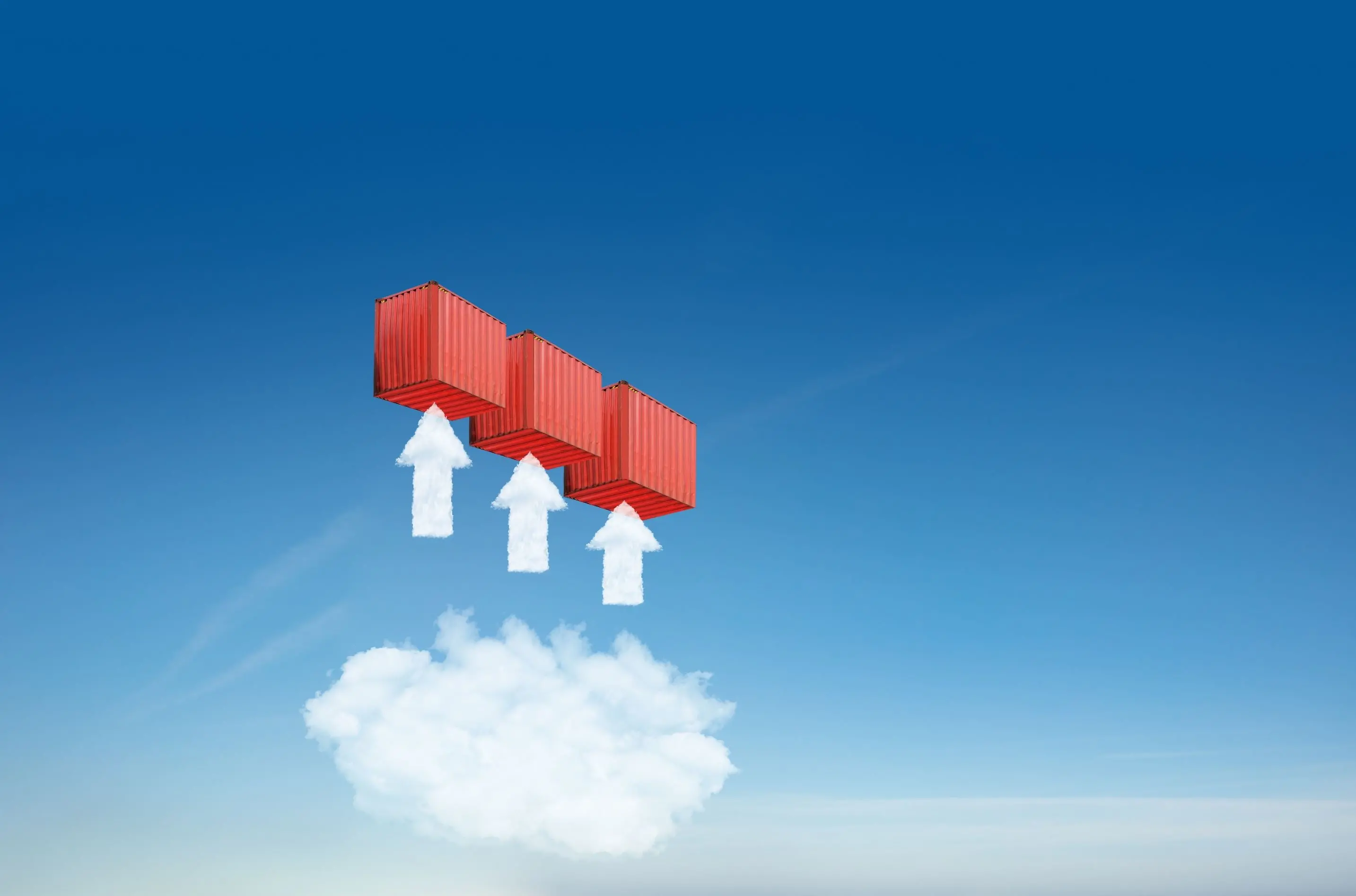In the fast-paced world of software development, Docker is a game-changer. It simplifies application development, shipping, and deployment. Docker provides a containerization platform that allows developers to package applications and their dependencies into lightweight, portable containers. This makes it easier to manage and scale applications.
The convenience of Docker comes with a small caveat: the accumulation of unused Docker images, volumes, and containers can take up disk space over time. This can slow things down and waste resources. That's why efficient Docker cleanup is crucial for a healthy development environment.
In this article, we will guide you through the process of quickly removing Docker images, volumes, and containers. By the end of this guide, you will have the knowledge and tools to keep your Docker environment tidy and running smoothly.
Let's dive in and discover how to efficiently manage your Docker resources!
What is Docker?
Docker is an open-source containerization platform that simplifies application development, shipping, and running. It allows developers to package an application and all its dependencies, libraries, and configurations into a single unit called a "Docker image."
This image is lightweight, portable, and isolated from the host system, making it easy to deploy across various environments consistently.
Docker Images
Docker images are the building blocks of containers. They work like blueprints containing application code, runtime environment, libraries, and more. Images are created using a simple text file called a Dockerfile, which defines the configuration and setup of the containerized application.
Docker Containers
Docker containers are instances of Docker images. They create isolated and independent environments for applications and their dependencies. Containers ensure consistent and reproducible execution, regardless of the underlying infrastructure or operating system.
Docker Volumes
Docker volumes are used to persist data beyond the container's lifecycle. By default, containers are stateless, meaning any data created inside the container will be lost once the container is stopped or removed. Volumes provide a way to store and share data between the host system and containers or between multiple containers.
Significance of Docker Components
Isolation and Portability
Docker images and containers offer a high level of isolation, meaning each application and its dependencies run in its own isolated environment. This prevents conflicts and ensures consistency between applications.
Resource Efficiency
Docker's containerization approach is lightweight compared to traditional virtual machines. Containers share the host system's kernel, which reduces overhead and makes better use of system resources, allowing more containers to run on a single host.
Consistency across Environments
Docker images ensure consistency between development, testing, and production environments. Developers can build an image once and run it anywhere, eliminating the "it works on my machine" problem and streamlining the deployment process.
Reasons for Removing Docker Images, Containers, and Volumes
Disk Space Management
As developers work on various projects, a large number of images, containers, and volumes can accumulate on the system, consuming significant disk space. Regular cleanup helps reclaim storage and prevents potential performance issues.
Security and Vulnerability Management
Unused images and containers may contain outdated or vulnerable components. By removing them, you reduce the attack surface and minimize security risks.
Resource Optimization
Stale containers and unused volumes occupy valuable system resources. Removing them allows for better resource allocation and more efficient utilization of the host system.
Environment Consistency
As projects evolve, older versions of images or containers might not align with the latest development practices. Removing outdated components ensures that only relevant and up-to-date resources are present.
By mastering the art of efficient Docker cleanup, developers can maintain a lean and optimized Docker environment, leading to improved productivity and a smoother development process.
How to Remove Docker Images
In Docker, an image is a lightweight, stand-alone, and executable software package that contains all the essentials to run software like code, runtime, libraries, environment variables, and system tools. Images are stored in a layered format, where each layer represents a specific change or addition to the previous layer, making images efficient to distribute and share.
5 Steps to Remove Docker Images

By following this step-by-step guide, you can efficiently manage your Docker images and reclaim valuable disk space in your Docker environment. Regular image cleanup ensures a streamlined and optimized Docker experience.
Step 1: List Docker Images
To begin, open a terminal or command prompt and ensure you have Docker installed and running. To list all Docker images present on your system, use the following command:
docker images
This command will display a list of all Docker images along with their respective repository names, tags, image IDs, creation dates, and sizes.
Step 2: Identify Images to Remove
Review the list of Docker images to identify the ones you want to remove. Note down the IMAGE ID or REPOSITORY:TAG of the images you wish to delete.
Step 3: Remove a Single Image
To remove a single Docker image, use the following command, replacing IMAGE_ID with the actual image ID or REPOSITORY:TAG with the image's repository and tag:
docker rmi IMAGE_ID
or
docker rmi REPOSITORY:TAG For example, to remove an image with the ID a5c4b7fd26b1, you would run:
docker rmi a5c4b7fd26b1
Step 4: Remove Multiple Images
To remove multiple Docker images at once, you can specify their IMAGE IDs or REPOSITORY:TAGs separated by spaces:
docker rmi IMAGE_ID_1 IMAGE_ID_2 IMAGE_ID_3
or
docker rmi REPOSITORY:TAG_1 REPOSITORY:TAG_2 REPOSITORY:TAG_3 For example, to remove images with the IDs d6e5a8de17a2, f7e9b1ac7b7e, and b3c6e2d9a1e4, you would run:
docker rmi d6e5a8de17a2 f7e9b1ac7b7e b3c6e2d9a1e4
Step 5: Remove All Unused Images
To remove all unused Docker images (i.e., dangling images with no associated containers), use the following command:
docker image prune Docker will prompt you to confirm the removal of unused images. Type y and press Enter to proceed.
Note: Be cautious when removing images, as it is irreversible and any dependent containers will no longer work correctly if their corresponding images are deleted. Ensure that you are removing only the images you no longer need.
How to Remove Docker Containers

In Docker, a container is a lightweight and isolated runtime environment created from a Docker image. It encapsulates the application and its dependencies, making it easy to run and manage applications consistently across different environments.
Each container operates in isolation from other containers and the host system, ensuring that changes made to one container do not affect others.
Step-by-Step Guide to Remove Docker Containers
By following this step-by-step guide, you can efficiently manage your Docker containers and keep your Docker environment clutter-free, promoting a smoother and more organized development workflow.
Step 1: List Docker Containers
Before removing containers, it's useful to see a list of all running and stopped containers on your system. To do this, open a terminal or command prompt and enter the following command:
docker ps -a The above command will display a list of all Docker containers, including their container IDs, names, status (running or stopped), associated images, creation dates, and various other details.
Step 2: Identify Containers to Remove
Review the list of Docker containers to identify the ones you want to remove. Note down the CONTAINER ID or CONTAINER NAME of the containers you wish to delete.
Step 3: Stop a Running Container (if needed)
If the container you want to remove is currently running, you must stop it before removing it. To stop a running container, use the following command, replacing CONTAINER_ID with the actual container ID or CONTAINER_NAME with the container's name:
docker stop CONTAINER_ID
or
docker stop CONTAINER_NAME For example, to stop a container with the ID a1b2c3d4e5f6, you would run:
docker stop a1b2c3d4e5f6
Step 4: Remove a Single Container
To remove a single Docker container, use the following command, replacing CONTAINER_ID with the actual container ID or CONTAINER_NAME with the container's name:
docker rm CONTAINER_ID
or
docker rm CONTAINER_NAME For example, to remove a container with the ID a1b2c3d4e5f6, you would run:
docker rm a1b2c3d4e5f6
Step 5: Remove Multiple Containers
To remove multiple Docker containers at once, you can specify their CONTAINER IDs or CONTAINER NAMES separated by spaces:
docker rm CONTAINER_ID_1 CONTAINER_ID_2 CONTAINER_ID_3
or
docker rm CONTAINER_NAME_1 CONTAINER_NAME_2 CONTAINER_NAME_3 For example, to remove containers with the IDs a1b2c3d4e5f6, b7c8d9e1f2a3, and c4d5e6f7a8b9, you would run:
docker rm a1b2c3d4e5f6 b7c8d9e1f2a3 c4d5e6f7a8b9
Step 6: Remove All Stopped Containers (Optional)
If you want to remove all stopped containers from your system, you can use the following command:
docker container prune Docker will prompt you to confirm the removal of stopped containers. Type y and press Enter to proceed.
Note: Be cautious when removing containers, as it is irreversible, and any data stored inside the containers will be lost. Ensure that you are removing only the containers you no longer need.
How to Remove Docker Volumes

In Docker, a volume is a separate directory or filesystem that stores data beyond the container's life. Volumes are crucial for data management as they allow sharing between the host system and containers or among multiple containers. They preserve databases, configuration files, and other data even when containers are removed or replaced.
Step-by-Step Guide to Remove Docker Volumes
By following this step-by-step guide, you can efficiently manage your Docker volumes and keep your Docker environment tidy and organized, ensuring data persistence and smooth operation of your containerized applications.
Step 1: List Docker Volumes
To start, open a terminal or command prompt and ensure Docker is installed and running. To list all Docker volumes present on your system, use the following command:
docker volume ls
This command will display a list of all Docker volumes, including their names and driver information.
Step 2: Identify Volumes to Remove
Review the list of Docker volumes to identify the ones you want to remove. Note down the VOLUME NAME of the volumes you wish to delete.
Step 3: Remove a Single Volume
To remove a single Docker volume, use the following command, replacing VOLUME_NAME with the actual volume name:
docker volume rm VOLUME_NAME For example, to remove a volume with the name my_data_volume, you would run:
docker volume rm my_data_volume
Step 4: Remove Multiple Volumes
To remove multiple Docker volumes at once, you can specify their names separated by spaces:
docker volume rm VOLUME_NAME_1 VOLUME_NAME_2 VOLUME_NAME_3 For example, to remove volumes with the names data_volume1, data_volume2, and data_volume3, you would run:
docker volume rm data_volume1 data_volume2 data_volume3
Step 5: Remove All Unused Volumes (Optional)
If you want to remove all Docker volumes that are not associated with any containers, you can use the following command:
docker volume prune Docker will prompt you to confirm the removal of unused volumes. Type y and press Enter to proceed.
Note: Be cautious when removing volumes, as it is irreversible, and any data stored in the volumes will be lost. Ensure that you are removing only the volumes you no longer need.
Using Docker Prune Command
Efficiently managing Docker resources is vital for a healthy development environment. Docker's "docker prune" command offers a simple way to clean up unused resources like images, containers, volumes, and networks. It streamlines your Docker ecosystem and frees up valuable disk space.
Docker Prune Command Overview
The docker prune command is a user-friendly way to remove unused Docker resources. It helps developers free up disk space and improve system performance by eliminating unnecessary artifacts that accumulate over time during the development and testing process.
Forms of the Docker Prune Command
docker system prune:
This form of the docker prune command removes all unused data, including dangling images (images with no associated container), stopped containers, and unused networks and volumes.
Usage:
docker system prune
Note: Docker will prompt you to confirm the removal of unused resources. Type y and press Enter to proceed.
docker container prune:
This variant of the docker prune command focuses on removing stopped containers, freeing up resources occupied by containers that are no longer in use.
Usage:
docker container prune
Note: Docker will prompt you to confirm the removal of stopped containers. Type y and press Enter to proceed.
docker image prune:
The docker image prune command targets unused images, which may be created during the build process or as intermediate layers when creating new images.
Usage:
docker image prune
Note: Docker will prompt you to confirm the removal of unused images. Type y and press Enter to proceed.
docker volume prune:
With docker volume prune, you can remove any unused volumes that are not currently associated with any containers.
Usage:
docker volume prune
Note: Docker will prompt you to confirm the removal of unused volumes. Type y and press Enter to proceed.
docker network prune:
The docker network prune command allows you to clean up unused Docker networks that are no longer being used by any containers.
Usage:
docker network prune
Note: Docker will prompt you to confirm the removal of unused networks. Type y and press Enter to proceed.
Benefits of Using Docker Prune
Disk Space Optimization: Docker Prune helps reclaim valuable disk space by removing redundant and unused resources, leading to better disk management.
Improved Performance: Eliminating unnecessary resources results in a more efficient and responsive Docker environment.
Security and Maintenance: Regularly cleaning up Docker resources helps mitigate security risks by removing outdated and potentially vulnerable components.
Conclusion
The docker prune command is useful for routine Docker maintenance, keeping development environments organized and efficient. With it, you can easily remove unused resources like images, containers, volumes and networks ensuring an optimal Docker experience.
Now that you have the knowledge and tools to efficiently manage Docker resources, take action to optimize your development environment. Regularly apply Docker cleanup techniques to keep your system running at its best and streamline your software development process.
Frequently Asked Questions
Will removing unused images affect running containers?
No, removing unused images does not impact running containers. Containers are based on the images that were used to create them. Removing images only affects containers created from those images if they were stopped and not in use.
Can I prune specific types of resources with Docker?
Yes, Docker provides different prune commands to target specific types of resources, such as images, containers, volumes, networks, etc. This allows you to selectively clean up the resources you want to manage.
Can I recover a Docker image, volume, or container once it has been deleted?
No, Docker deletion is irreversible. Once you remove an image, volume, or container, its data is permanently lost. Always ensure that you have backups or alternative sources if you might need the resources again.
How can I automate the removal of unused Docker components?
You can automate the removal of unused Docker components by creating scripts or using tools that execute Docker prune commands regularly. Be cautious with automation, and ensure you validate the resources to be deleted to avoid accidental removal of important components.
What does the -f or --force flag do in Docker removal commands?
The -f or --force flag in Docker removal commands forces the removal of resources, even if they are running or in use. Be cautious when using this flag, as it may lead to data loss and unexpected behaviour.
Why might I encounter an error when trying to remove a Docker image, volume, or container?
You might encounter errors when trying to remove Docker components if they are in use, or if you do not have the necessary permissions to perform the removal operation. Ensure that you stop running containers before removing them and use appropriate user privileges when executing Docker commands.

Yetunde Salami is a seasoned technical writer with expertise in the hosting industry. With 8 years of experience in the field, she has a deep understanding of complex technical concepts and the ability to communicate them clearly and concisely to a wide range of audiences. At Verpex Hosting, she is responsible for writing blog posts, knowledgebase articles, and other resources that help customers understand and use the company's products and services. When she is not writing, Yetunde is an avid reader of romance novels and enjoys fine dining.
View all posts by Yetunde Salami






















